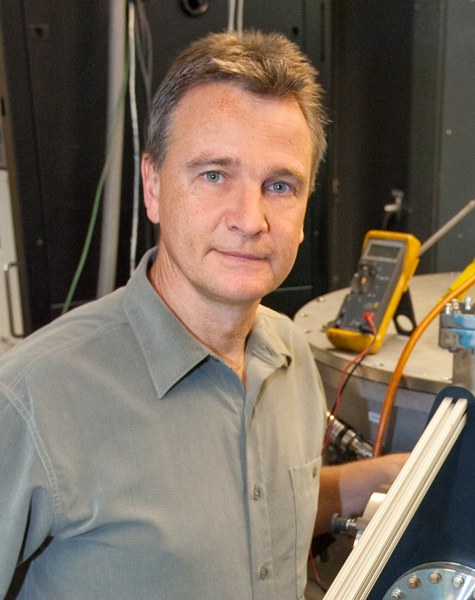The U.S. Department of Energy’s national laboratories use a portion of their overhead funds for future-looking research through a program called Laboratory Directed Research and Development (LDRD). Traditionally the projects chosen for LDRD support have been identified with a lab’s strategic directions, as represented by core programs in its scientific divisions. LDRD funding has been essential to furthering Berkeley Lab’s mission – in areas from cosmology to computing, from cancer research to climate change, and many others.
In late 2008, Paul Alivisatos and acting deputy director Jay Keasling decided to try something new. Together they launched a second track of LDRD awards called the “Discovery” proposal review. Submitted by Berkeley Lab scientists independently of their divisions, these proposals were to be evaluated exclusively through external review. Bold and highly innovative concepts with a strong potential for impact in their fields were encouraged.
“The purpose of this LDRD track is to enable discovery independent from lab-wide initiatives,” says Alivisatos. “We hope it will encourage young scientists to build careers here, as well as facilitate changes in research direction for more senior scientific staff.”
The application process was launched early in 2009 for the first Discovery projects, to be funded in 2010. Requirements were specific: direct funding was modest, around $120,000 each, and applicants had to decide between going for a Discovery grant or for traditional LDRD support vetted by their division; duplicate applications were not allowed. To underscore the point, anonymous independent reviewers, experts in the appropriate fields but having no affiliation with Berkeley Lab or the UC Berkeley campus, reviewed the proposals and discussed them directly with Keasling and Alivisatos.
Over 90 LDRD awards for 2010 were announced early in December 2009. Five of these were “Track 2 Discovery Review projects,” for research ranging from the most fundamental to the most practical. All offer a chance of revolutionary results.
***
“A Plasma-Assisted High-Rate Deposition Concept for Energy Applications,” awarded to André Anders
André Anders heads the Plasma Applications Group in the Accelerator and Fusion Research Division, working with “accelerators” that are rather smaller than the particle colliders and light sources that concern much of the division. Anders typically accelerates ions a few centimeters to coat substrates of various shapes and sizes. Many of these techniques are then scaled-up to industrial dimensions.
“There’s a class of materials that are important to energy conservation and energy generation which are difficult to apply in an efficient, industrial-scale manner,” Anders explains. “These are transparent, electrically conducting films – metal oxides like those used in flat-panel touch displays, for example.”
For energy applications like smart windows or wide-area photovoltaics, the major challenges to industrial-scale use are the high cost of the materials themselves and the inefficiency of the coating process, which is often done on a glass substrate.
Indium tin oxide, ITO, has the best properties for a wide range of uses including solar cells and organic light-emitting diodes. But indium is an expensive metal, and its cost has increased even more with widespread use.
“A much cheaper alternative is aluminum zinc oxide, or AZO,” says Anders. “The first challenge is to make AZO as good – or almost as good – as ITO. The second is to make it fast and economically.”
A fast process that could readily cover wide areas, such as sheets of window glass, was developed in the 1950s and 60s. Called evaporative deposition, it was a high-temperature process, and the quality of its films was variable and poor.
A technique for depositing high-quality films, called magnetron sputtering, was developed in the 1970s. Atoms of the material to be deposited are knocked off a target by energetic ions, and some of them are deposited on the substrate. If the sputtered atoms are ionized, their energy and direction can be adjusted, leading to superior coatings. The target must be cooled so as not to melt, and on the industrial scale sputtering is woefully wasteful and slow.
Anders has developed sputtering methods for depositing high-quality films of metal at a much higher rate. But metal-oxide films pose a real challenge: how to oxidize the metal with speed and precision.
Anders says, “The idea is to find a synergy of high and low-temperature techniques, perhaps with a magnetron that is not melting but very hot, or perhaps by sputtering liquid metal, or with another approach. The elements of the answer are known. The challenge is to put them together in the right way.”
Successful solutions could revolutionize the manufacture of economical energy-saving and energy-generating products.
***
Read A Novel Route to Discovery, Part Two, describing a novel approach to imaging subsurface fluids.
Additional information
Berkeley Lab’s Laboratory Directed Research and Development page

